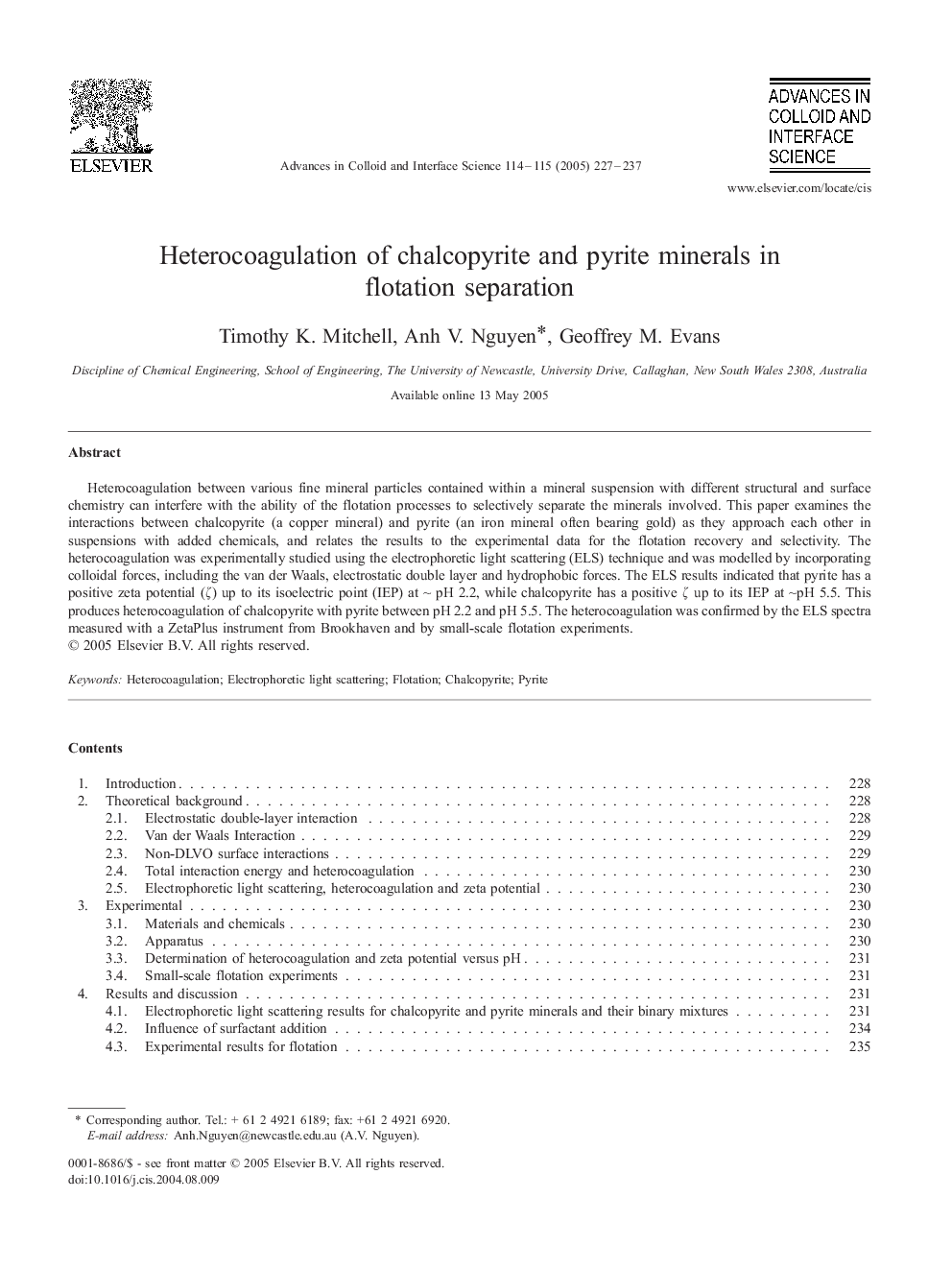| Article ID | Journal | Published Year | Pages | File Type |
|---|---|---|---|---|
| 9675281 | Advances in Colloid and Interface Science | 2005 | 11 Pages |
Abstract
Heterocoagulation between various fine mineral particles contained within a mineral suspension with different structural and surface chemistry can interfere with the ability of the flotation processes to selectively separate the minerals involved. This paper examines the interactions between chalcopyrite (a copper mineral) and pyrite (an iron mineral often bearing gold) as they approach each other in suspensions with added chemicals, and relates the results to the experimental data for the flotation recovery and selectivity. The heterocoagulation was experimentally studied using the electrophoretic light scattering (ELS) technique and was modelled by incorporating colloidal forces, including the van der Waals, electrostatic double layer and hydrophobic forces. The ELS results indicated that pyrite has a positive zeta potential (ζ) up to its isoelectric point (IEP) at â¼ pH 2.2, while chalcopyrite has a positive ζ up to its IEP at â¼pH 5.5. This produces heterocoagulation of chalcopyrite with pyrite between pH 2.2 and pH 5.5. The heterocoagulation was confirmed by the ELS spectra measured with a ZetaPlus instrument from Brookhaven and by small-scale flotation experiments.
Related Topics
Physical Sciences and Engineering
Chemical Engineering
Colloid and Surface Chemistry
Authors
Timothy K. Mitchell, Anh V. Nguyen, Geoffrey M. Evans,
